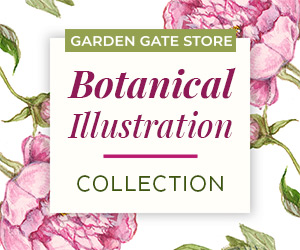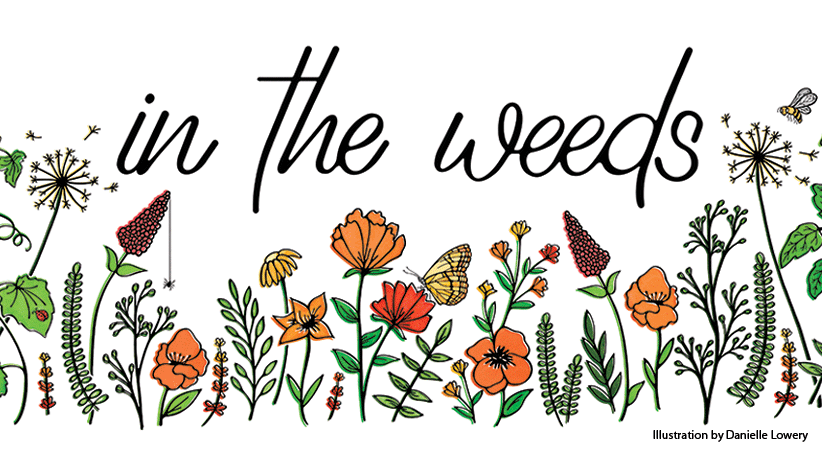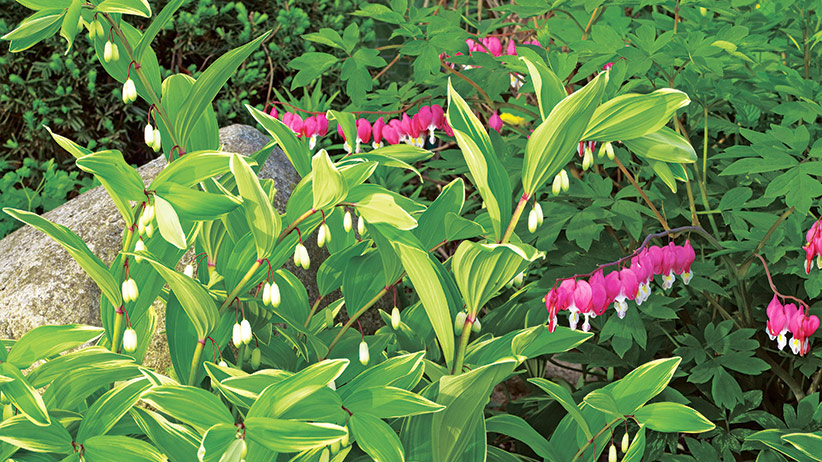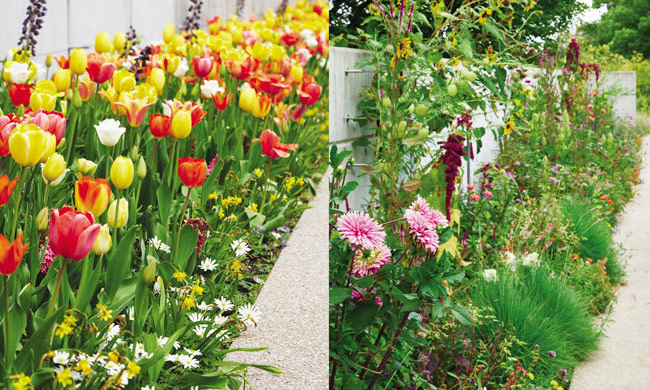
The Greater Des Moines Botanical Garden
Des Moines, Iowa
Built by the city of Des Moines in 1979, the Greater Des Moines Botanical Garden began with a geodesic dome housing palm trees (some donated by Longwood Gardens), lots of tropicals and desert plants and just a few outdoor plantings. Big changes in the past 10 years have expanded the outdoor gardens dramatically so there’s even more to explore in this 12-acre urban garden close to downtown.
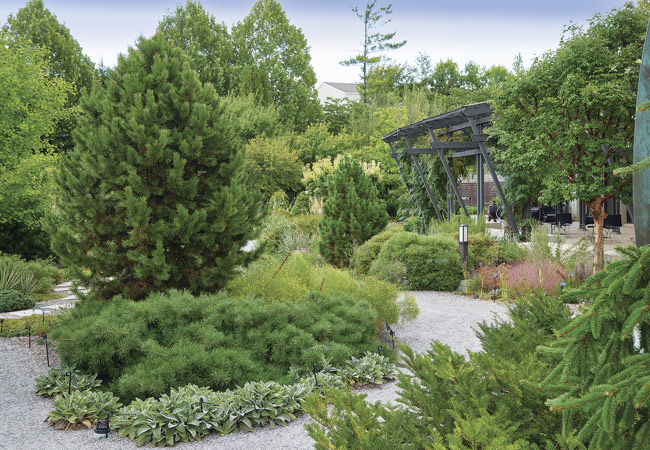
Explore the Dorothy and Max Rutledge Conifer garden
The Dorothy and Max Rutledge Conifer Garden takes its lead from Beth Chatto’s classic book, The Gravel Garden. Plants grow in a 5- to 6-inch layer of gravel that helps discourage weeds and provides sharp drainage. Dry-loving perennials, such as moon carrot (Seseli gummiferum), Texas plume (Ipomopsis rubra) and sea kale (Crambe maritima), grow alongside an eclectic collection of conifers that includes ‘Green Arrow’ Alaskan cedar (Cupressus nootkatensis) and ‘Gold Drift’ Norway spruce (Picea abies).‘Taylor’s Sunburst’ lodgepole pine (Pinus contorta) above has golden-yellow new growth that matures to dark green. It looks great with the yellow flowers of native prairie broomweed (Amphiachyris dracunculoides) and a low-growing Scots pine (Pinus sylvestris).
Locals on the lookout for seasonal inspiration will find plenty at the Koehn Garden. Here, colorful borders and a waterfall surround a central lawn where the garden frequently hosts special events. In the Lauridsen Savanna, visitors find a blend of native and cultivated varieties with a loose, natural look.
Related Articles:
How to Grow a Gravel Garden
Drought-Tolerant Plants for Your Garden
Shop Garden Design and Project Plans
Stroll through the Wells Fargo Rose garden
With cold winter winds and hot, humid summers in the Midwest, growing roses (Rosa spp. and hybrids) can be quite a challenge. But Horticulture Manager Leslie Hunter has had great success growing lots of different types in the Wells Fargo Rose Garden. All the roses are grown organically in a mixed perennial border that’s outside the main garden near the parking lot. It’s one of several gardens that you can visit without paying admission. Leslie shares some of the star performers in “Roses for the Midwest” below.
Winter rose care
To protect the roses in winter, the crowns are covered with compost 4 inches deep and 10 to 12 inches wide. Grafted varieties get some extra attention at planting time. She’s found that placing the graft 4 inches below the soil level gets the roses through winter better so they’re sure to have those beautiful blooms for years to come.
You Might Also Like:
Shrub Roses for Tricky Spots in the Garden
How to Prune Roses
How to Create a Beautiful Rose Garden
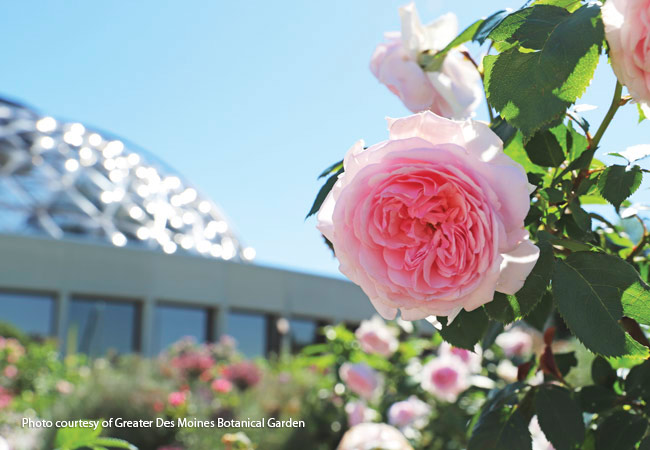
Best roses for the Midwest
If you’ve been frustrated growing roses where winter is cold and summer is hot and humid, check out these varieties that thrive in this USDA zone 5 public garden. They all do best in full sun and have great disease resistance.
- Susan Williams-Ellis shrub rose
The small, white double blooms of this David Austin rose are very fragrant and with deadheading, bloom from late spring to frost. Plants grow 54 inches tall and 42 inches wide in USDA zones 4 to 11. - ‘Pearlie Mae’ shrub rose
Not only is this Griffith Buck-bred rose hardy in USDA zones 4 to 9, it has beautiful apricot-colored blooms. Vigorous plants grow 3 to 4 feet tall and wide. - Darlow’s Enigma hybrid musk
Clusters of single white blooms are super fragrant and repeat all season — the bees love it! Plants can take part shade and grow 8 to 12 feet tall and up to 10 feet wide in USDA zones 4 to 9. - ‘Emily Carr’ shrub rose
Gorgeous 3-inch semi-double red blooms start in late spring and repeat all season. You’ll often see this member of the Canadian Artist series listed as 4 to 5 feet tall but at the Gardens, plants grow closer to 8 feet tall. This rose is cold hardy in USDA zones 3 to 9.
Plan a visit!
The Greater Des Moines Botanical Garden
909 Robert D. Ray Drive, Des Moines, Iowa
General admission: $12 (memberships and discounts available)
Follow on Instagram: @dmbotanicalgarden
Join and support your local botanical garden!
In addition to free visits and special member events, many botanical gardens offer reciprocity: Free or discounted entry fees to hundreds of public gardens across North America. Visit The American Horticultural Society website for a list of participating gardens.
You Might Also Like:
More Botanic Gardens to Visit in the U.S.
Idaho Botanical Gardens
Longwood Gardens
Sarah P. Duke Gardens







